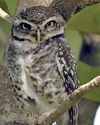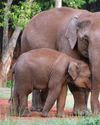According to WWF’s ‘Living Planet’ report, global wildlife populations have declined by 60 per cent since 1970 due to unsustainable human activities.

GLOBAL WILDLIFE POPULATIONS DECLINE BY 60 PER CENT
According to WWF’s ‘Living Planet’ report, global wildlife populations have declined by 60 per cent since 1970 due to unsustainable human activities. Uncontrolled consumption has decimated marine life, birds, mammals, reptiles and amphibians, outlines the report based on an ongoing survey of 16,704 populations of 4,005 vertebrate species across the globe.
Tropical areas have reported the worst declines, with an 89 per cent fall in populations across Latin America and the Caribbean. Freshwater ecosystems are also hardhit, recording an 83 per cent species decline worldwide. Habitat loss, poaching, pollution of land and seas, and rising temperatures have all contributed to the mass extinction. WWF International Director Marco Lambertini, in light of this state of emergency, has called for a new global deal for nature, much like the Paris Climate treaty. With the upcoming meeting of 195 nations at the United Nations’ Convention on Biological Diversity (CBD), Lambertini hopes for a revolution.
CHINA REVERSES, THEN RE-THINKS BAN ON RHINO AND TIGER PARTS
This story is from the December 2018 edition of Sanctuary Asia.
Start your 7-day Magzter GOLD free trial to access thousands of curated premium stories, and 9,000+ magazines and newspapers.
Already a subscriber ? Sign In
This story is from the December 2018 edition of Sanctuary Asia.
Start your 7-day Magzter GOLD free trial to access thousands of curated premium stories, and 9,000+ magazines and newspapers.
Already a subscriber? Sign In

Why Children Are Needed To Help Save The World
On my very first day in India, I encountered many marvelous new customs not practiced in the United States, my home country. But the most curious by far involved trees. Here and there, alongside the roaring streets of Mumbai were rings of marigold wreathed around twisting banyan trunks like dried rays of afternoon sunlight…

Who's Who?
Fact: all toads are frogs, but not all frogs are toads! Let’s unpack this...

The Sea Raptor
The White-bellied Sea Eagle Haliaeetus leucogaster is one of the most common raptors along the Indian coastline. Nevertheless, the sight of this soaring, broad-winged, white and black bird of prey is nothing less than majestic

Bringing Up Bob Hoots.
While we were visiting a friend’s farm in the village of Yelachetty, near Bandipur Tiger Reserve, we found Spotted Owlets nesting on the tiled roof… and one of the chicks on the kitchen floor!

Yala, Land Of The Leopard
Yala is not only Sri Lanka’s second-largest, but also the most-visited national park in the island nation.
The Wizards Of Oz!
Australia is not only a country, but also a continent. The land down under, cut-off from the rest of the world has an abundance of unique species of native animals, birds, reptiles, insects and plants.

Scales & Tails
I was really excited and looking forward to the workshop on reptiles and amphibians at Nature’s Nest in Mollem, Goa, between June 24 and 26, 2017. It was my opportunity to meet renowned herpetologist Varad Giri.

Big, Brilliant And Endangered
When one thinks of elephants, the first word that probably comes to mind is BIG! But elephants, while they may be the largest creatures on land, are not just big and powerful, they’re wise and sensitive as well. Recent scientific studies have established that they are among the most intelligent animals in the world.

Earth Manners
Everyday habits matter! Let’s be kind to the planet, animals and ourselves!

World Scan
CHINA’S IVORY TOWNAn explosive investigation by the Environmental Investigation Agency has revealed how criminal gangs originating from an obscure town in southern China have come to dominate the smuggling of ivory tusks poached from African elephants.